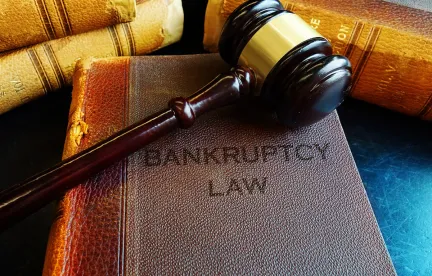This blog entry will be the first in a new, ongoing series of entries in the “Bankruptcy Protector” that will attempt to familiarize new attorneys and non-bankruptcy practitioners with the basic concepts of bankruptcy law of which all lawyers should be aware. The goal of this series is to present these foundational bankruptcy topics from a 50,000-foot view to orient the reader with the concepts in a simple, straightforward manner so that the reader can provide a summary of the issue to any client or colleague, without necessarily diving headfirst into the Bankruptcy Code or the mountains of case law parsing out the intricacies of each concept. The first topic that will be covered in this entry is one of, if not the, most critical aspects of bankruptcy law: the “Automatic Stay.”
Upon the filing of a bankruptcy petition, regardless of what chapter the petition is filed under, there are a number of events that automatically occur under the Bankruptcy Code. Chief among these are (1) the creation of the bankruptcy “estate,” comprising of all of the assets, tangible and intangible, of the newly-filed debtor and (2) the imposition of the Automatic Stay under section 362 of the Bankruptcy Code. The Automatic Stay is a protective shield for the debtor that prevents creditors from taking any further action against either the debtor or the debtor’s assets and is effective the instant the bankruptcy petition is filed. This applies to both current and future actions. If a debtor is a defendant in a collection action by a creditor, the Automatic Stay freezes that litigation and the creditor cannot prosecute that action any further, without taking additional steps in the bankruptcy court. If a creditor is garnishing a debtor’s pay, that garnishment action must cease upon imposition of the Automatic Stay. If a creditor is one day away from foreclosing on a debtor’s property when the petition is filed, that foreclosure must be postponed.
The purpose behind the Automatic Stay is to provide the debtor with a “breathing spell” free of the various creditors that could be seeking payment and to avoid the “race to the courthouse” that so often occurs when a debtor has insolvency issues. By staying all litigation, collection activity, and other actions against the debtor and the debtor’s property, the stay attempts to place all creditors on a level playing field and allow the debtor time to sort out the various issues related to the debtor’s insolvency.
Because the Automatic Stay is immediate and practically all-encompassing, it is one of the most powerful debtor protections provided by the Bankruptcy Code. And a creditor that violates the Automatic Stay can face serious consequences for such violation, including sanctions. As a result, a creditor that learns that a debtor is in bankruptcy should immediately seek out bankruptcy counsel to ensure that any actions they take with regard to that debtor’s account do not violate the stay. For example, if a supplier is providing goods to the debtor, it cannot just cease providing those goods because of the debtor’s bankruptcy status. Such action would constitute an adverse action against the debtor in violation of the Stay. Where a creditor is already going to have to face a number of complications as a result of the bankruptcy filing, the last thing they need is the imposition of sanctions as a result of a Stay violation.
The Automatic Stay is not, however, impenetrable. Creditors can, in certain circumstances, move for modification of, or relief from, the Automatic Stay. Typically relief from the Stay is available for secured creditors whose collateral is both (a) undersecured and (b) not necessary for the successful reorganization of the debtor. That is not, however, the only criteria for Stay relief, as there is a catch-all “for cause” basis for Stay relief under the Code. “Cause” can be a number of reasons, including the debtor’s failure to maintain post-petition payments, the debtor filing the bankruptcy case in “bad faith,” or the debtor otherwise subverting the intent of the protections afforded by the Bankruptcy Code through the filing. That said, Stay relief is never a given and bankruptcy courts are typically debtor-friendly forums. Any decision to seek relief from the Stay should be properly analyzed by a bankruptcy professional.
Put simply, the Automatic Stay places an immediate freeze on all adverse actions that a creditor could take against a debtor. This stay can be harsh for some creditors, but it must be followed so as to avoid any negative repercussions. The Stay protects the debtor and places all creditors on presumptively equal footing. If a client has a business relationship with a person or company that files for bankruptcy protection, the Automatic Stay is the first thing that should be discussed, to ensure that no actions are taken in violation of the Stay.




 />i
/>i


